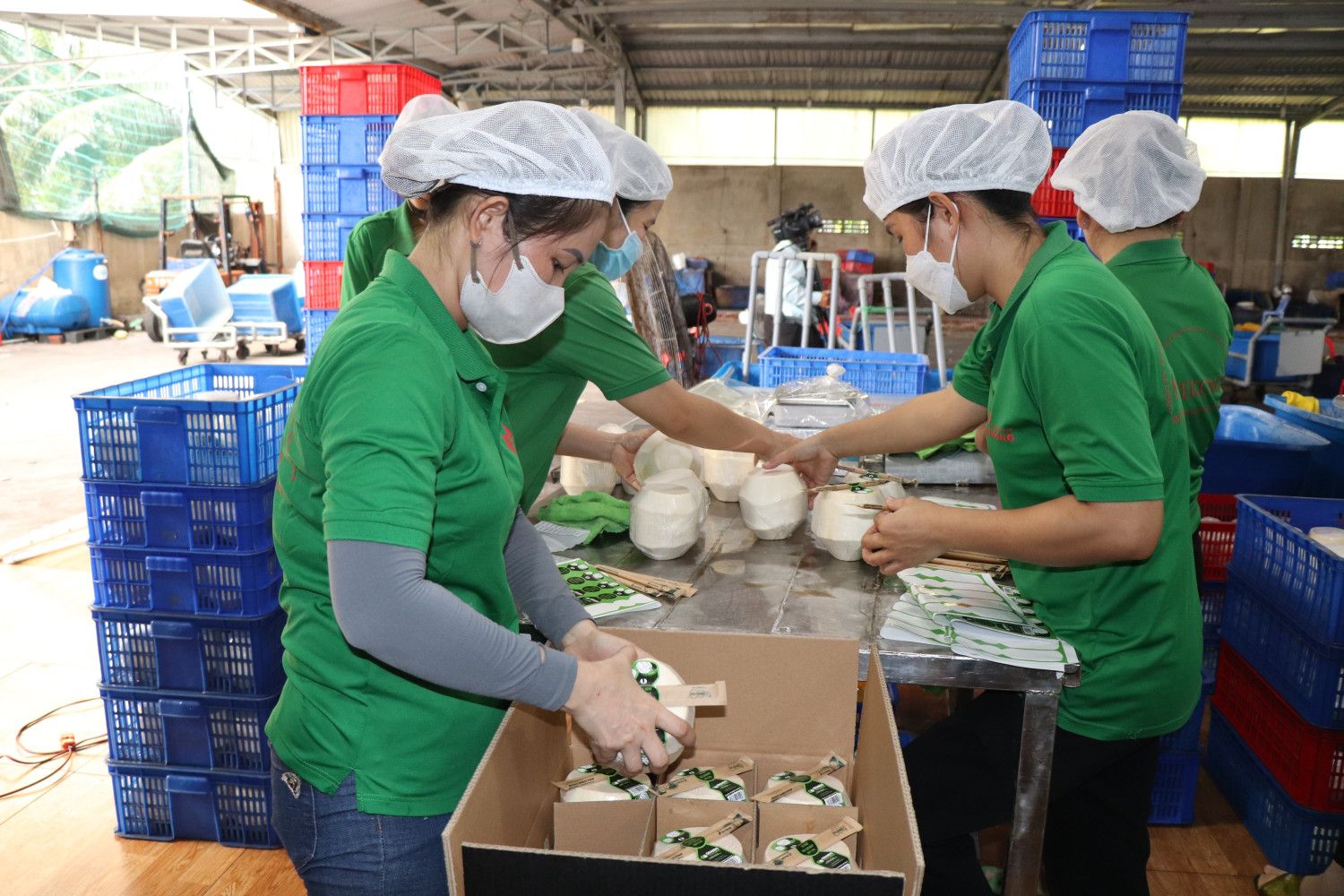HCMC – Vietnam’s coconut exports are projected to reach between US$1.1 billion and US$1.15 billion this year, up 20-25% from last year, the Vietnam Coconut Association said.
The forecast would keep Vietnam among the world’s top five coconut exporters. Export revenue in the first half of 2025 exceeded US$520 million, rising over 20% from a year earlier. Key export items include fresh coconuts, frozen coconut milk, crude coconut oil, processed food and cosmetics, handicrafts, and agricultural by-products, reported the Vietnam News Agency.
Shipments usually rise in the second half, suggesting total export value could surpass last year’s US$390 million from fresh coconuts alone.
Farmgate prices have risen from VND5,000 per fruit in 2023 to VND15,000 in the third quarter of 2025. Domestic prices remain lower than international levels, the association said.
Cao Ba Dang Khoa, general secretary of the association, said exporters need to improve sustainability by adopting climate-resilient farming, phasing out harmful pesticides, automating processing, and strengthening traceability through digital mapping of planting areas.
The Mekong Delta is Vietnam’s main coconut-growing region, but plantations are expanding into the southeastern and Central Highlands provinces. Some new growing areas, covering 30-50 hectares, have been granted planting codes for export.
China consumes more than six billion coconuts annually and accounts for 30-35% of Vietnam’s exports. Vietnam ranks seventh or eighth among fresh coconut suppliers to China. The General Administration of Customs of China recently approved six more planting areas and packaging facilities in An Giang Province for export.
Vietnam has stronger market share in processed coconut products, such as dried coconuts, coconut milk, canned coconut water, and cosmetic ingredients, particularly in the United States and China.
Khoa emphasized that ensuring stable raw material supply, improving productivity, and promoting organic farming will be key to strengthening Vietnam’s position against competitors such as Thailand, Indonesia, and Malaysia.









